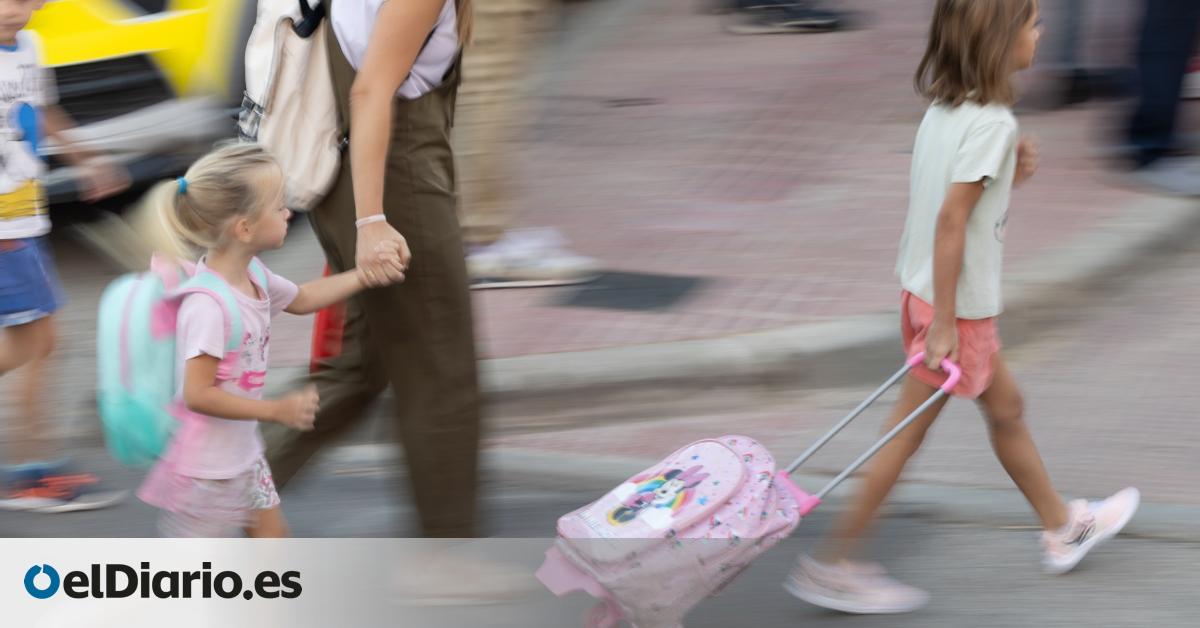
No country in the entire OECD has a greater gap between rich and poor students in the public system. Spain is the nation among the advanced countries that groups together the most socioeconomically advantaged students in the subsidized schools and the less favored in the public school, according to the report. For an inclusive charter schoolin which Save the Children analyses 18 educational systems from around the world.
The study, carried out with the aim of moving towards a more inclusive private school, also establishes some more or less intuited or known issues about these private schools supported with public funds: their mere existence does not prevent an educational system from being equitable – as demonstrated in other countries –; the performance among the students of both networks is similar; these centers are not motivated by religious motives and proliferate where “families have sufficient financial capacity”; in addition, many families cannot afford the fees.
But it also makes a point in favour of these centres. The public funding they receive, the text explains, is insufficient, which causes them to look for other means of financing that families have to bear – fees, school meals, school transport. And it is precisely these alternative means that leave many students out of the private schools. If the administrations put more money into these centres, the authors maintain, this vicious circle could be broken and subsidised private schools could be opened to everyone (in theory).
It doesn’t have to be this way
Save the Children develops a couple of key ideas in its study: the private schools in Spain leave out families, they are not inclusive, nor are they better in terms of performance, and they look for wealthy areas to locate themselves in. But there is also room for optimism: it does not have to be this way, says the organization. The characteristics so typical of the Spanish private subsidized sector are not intrinsic to this school model, they are specific to it. There are countries – such as the Netherlands or Great Britain – where there are no differences between one network and another. According to Alfonso Echazarra, author of the study, it can even be offensive to insinuate that there are differences.
This is not the case in Spain. There are differences here, starting with the composition of the students, the report explains, which then ends up affecting the entire system. “It is not surprising that Spain is the educational system in which the socioeconomic differences between educational centres are explained to a greater extent by the socioeconomic differences that exist between the public and subsidised networks. In the Spanish case, almost 21% of school segregation (measured by the socioeconomic differences between schools) is explained by the unequal socioeconomic composition between subsidised and public schools. This figure makes Spain an unfortunately unique case,” says Save the Children. In other countries with a presence of subsidised schools (private schools that obtain at least 50% of their funding from public sources) this differentiation between students depending on whether the school is public or subsidised does not exist.
Another study, by the BBVA Foundation and the Ivie Institute, broke it down into figures: public schools are “almost exclusively responsible”, the report said, for the training of students from less favourable socioeconomic backgrounds (60% of their students come from middle-class backgrounds and 33% from poorer ones), while private schools are mainly responsible for the more advantaged (27.1% and 7.5%, respectively).
There are also differences within Spain. Murcia is the community where students are most divided according to their socioeconomic level, followed by the Community of Madrid and the Canary Islands, while Cantabria, Galicia and Aragon are the ones with the least.
Worse funding, greater segregation
Everything is related, says Save the Children, to the vicious circle of (under)funding of state-funded schools. The premise is, in purely numerical terms, correct: state-funded schools accommodate almost 30% of students in the compulsory stage, but represent 12.5% of total public expenditure. It can be argued that their costs are reduced because they do not have a presence in the countryside, where education is more expensive, or because they serve far fewer students with educational support needs, but the numbers are what they are.
This underfunding, the NGO reflects, causes the centres to seek additional private funding based on fees, school canteens with prices above those of the public sector, or transport services (all of which are legal, as provided for by law). And these extra expenses are what leave the poorest families out of this circuit, as they cannot afford them.
In order to move towards a more inclusive private school, Save the Children asks the administrations (the central government sets the minimum module per private school, which the autonomous communities can complement) to increase the funding of private schools and thus break this spiral. The report compares the situation in Spain with other countries and concludes that “public funding of private schools seems to be related to the socioeconomic differences observed between students enrolled in public and private schools.”
That is, where the subsidised schools are better funded by the public, there are fewer differences between the pupils who attend public or subsidised private schools. When families do not have to pay, they mix more. It can even be calculated: for every 10 points that the funding of families in a school increases, the percentage of socio-economically less favoured pupils in that school decreases by 1.3%. Spain, where the public funds approximately 75% of the budgets of subsidised schools, is among the countries that injects the least money into its subsidised private schools.
A question of money
Another idea that Save the Children highlights is that, contrary to what is sometimes sold, the subsidized school does not respond to a social need for “freedom of choice of school” based on religious sentiment. Save the Children asked “why there are not so many subsidized schools in Andalusia, if supposedly it is to satisfy the religious preferences of families,” explains the author. And he cross-checked the data.
The result? “Concerted schools proliferate in places where families have sufficient financial capacity” to meet the costs involved, explains Echazarra. “It does not seem that the religious issue motivates the existence of more concerted schools. What explains why there are more or less concerted schools is the financial capacity of the families. The data are devastating because the relationship is almost perfect,” he maintains.
The Canary Islands, Andalusia, Extremadura and Castilla-La Mancha are the four communities with the lowest GDP per capita in Spain; they are also the four with the lowest percentage of students in private subsidised schools. On the other hand, the Basque Country, Navarre, the Community of Madrid and La Rioja are the ones with the highest income and the first three are also the three with the most students in subsidised schools.
The NGO’s theory is supported if we look at the relationship between the presence of the concerted system and the religiosity of the territory (which in some way also relates, in reverse, to income: the higher the income, the lower the percentage of believers): the communities with the most people who admit to being religious are those with the least concerted system.
The same thing happens when we talk about private schools and the countryside: the more rural an autonomous community is, the fewer schools of this type it will have.
The black hole of extra points
Finally, the report makes a series of recommendations to improve inclusiveness in state-funded schools. Having made the diagnosis, some proposals are expected: improving public funding for these centres so that they do not leave families out, providing additional funds for students based on vulnerability, eliminating the possibility of certain services being for-profit or having admission processes managed by the administration.
But the director of Save the Children, Andrés Conde, has focused on one aspect in particular: the extra points for free enrollment that schools in Spain have, which are often used to perpetuate family sagas or favor potential donors or certain profiles of parents. For example, giving a point for religious criteria (parents who studied at a Catholic center or university or come from another Catholic school), belonging to the congregation that runs the center or being enrolled in the sports club owned by the company or organization that manages the school. “Or the criterion that gives points for having former students who are family members, the one that gives points for enrollment in the first stage of infant school, which, as it is not universal, is not necessarily financed and favors wealthy families,” he lists. “Admission criteria with exclusionary potential must be eliminated,” concludes Conde.
Source: www.eldiario.es

